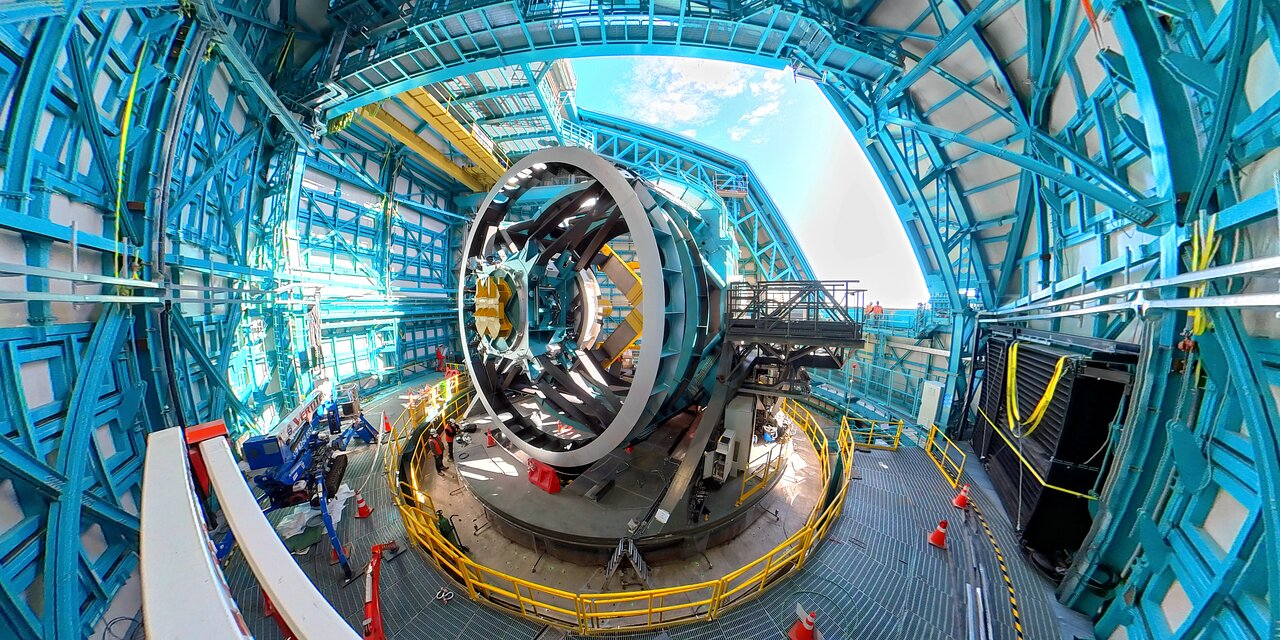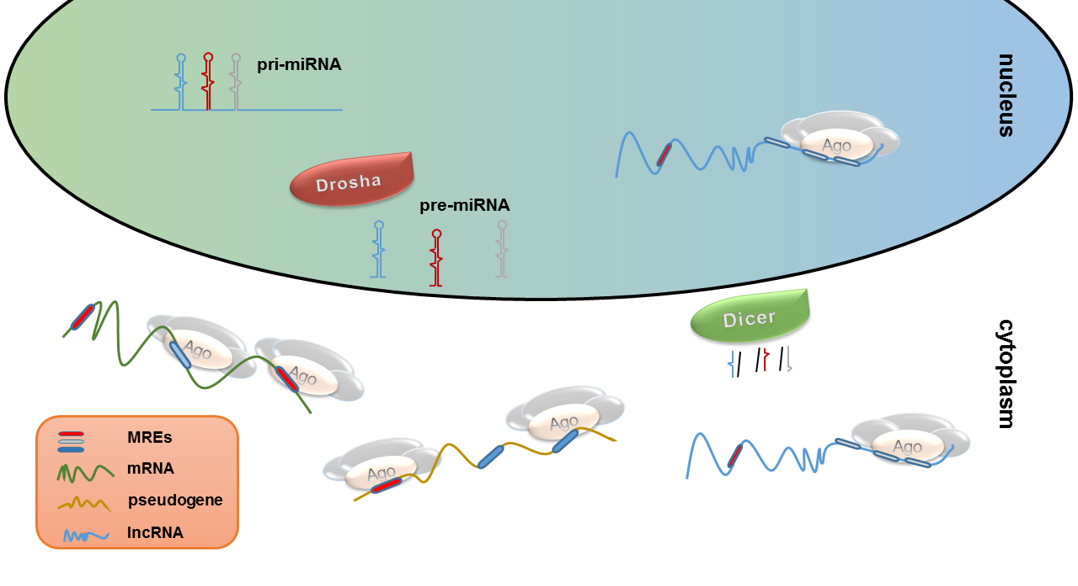The Rubin Observatory, a groundbreaking facility located in the Chilean Andes, is set to revolutionize our understanding of the cosmos through its major undertaking— the Legacy Survey of Space and Time (LSST). This ambitious project aims to create a comprehensive map of the universe over the course of a decade, focusing on pivotal areas such as dark matter research, Milky Way mapping, and cosmic cinematography. Equipped with the impressive LSST camera, which boasts a remarkable resolution, the observatory will capture detailed images of the night sky, offering a time-lapse view of celestial changes. With its first images already captured, the Rubin Observatory is not just expanding our horizons in astronomy; it is also making a wealth of data openly accessible to scientists and educators alike. As researchers gear up for an intense period of exploration, the insights gleaned from this space and time survey are poised to illuminate many of the universe’s greatest mysteries.
The Vera C. Rubin Observatory, often referred to simply as Rubin, represents a transformative advancement in astronomical research. By embarking on the Legacy Survey of Space and Time, this facility will intricately document the dynamics of the universe, positioning itself as an essential resource for understanding fundamental cosmic phenomena. The implementation of the cutting-edge LSST camera enables unparalleled views into areas like dark matter investigation, mapping the Milky Way, and creating mesmerizing cosmic cinematography. Through its commitment to open data policies, Rubin promotes collaboration and education, making the findings accessible to a global network of researchers and students. With every image captured, the observatory not only captures the beauty of the universe but also unlocks the potential to answer pressing questions about its composition and evolution.
The Significance of the LSST Camera in Dark Matter Research
The LSST camera, heralded as the largest astronomical camera ever constructed, is a pivotal tool in the quest for understanding dark matter. Designed to capture a staggering amount of data, the camera’s impressive resolution is essential for identifying and mapping the faintest signatures of dark matter structures within the Milky Way. By continuously scanning the night sky over a decade, the LSST camera aims to illuminate the elusive properties of dark matter, traditionally inferred from gravitational effects on visible matter. This unprecedented capability not only enhances our ability to observe celestial phenomena but also enriches the scientific pursuit of knowledge regarding the fundamental building blocks of our universe.
Furthermore, the deployment of the LSST camera at the Vera C. Rubin Observatory represents a monumental leap in astronomical technology. Its design integrates wide-field and large-aperture features, allowing astronomers to simultaneously observe multiple faint objects across vast expanses of the cosmos. This technological evolution is crucial, as it provides researchers with a time-sequenced array of data that can identify subtle changes in dark matter distributions. With over 90% of the Milky Way’s mass attributed to dark matter, unraveling its mysteries will significantly advance fundamental physics and our comprehension of the universe.
Mapping the Milky Way with Rubin Observatory’s Advanced Imaging Technology
The Rubin Observatory is poised to revolutionize our understanding of the Milky Way through comprehensive mapping that will not only capture static images but also dynamic changes over time. By employing the LSST camera, the observatory will compile a time-lapse catalog of the sky, reflecting its evolution nightly for ten years. This extensive dataset of the Milky Way will offer crucial insights into stellar formation, galactic structure, and the dynamics of celestial bodies. As a result, astronomers can grasp the complexities of our galaxy’s composition and behavior like never before.
Moreover, the data produced by the LSST camera will enable researchers to explore various phenomena within the Milky Way, from identifying potentially hazardous asteroids to tracing the paths of distant supernovae. Each observation will contribute to a more nuanced understanding of our galaxy and its place within the broader universe. By making this wealth of information freely accessible to scientists and educators alike, the Rubin Observatory facilitates collaborative and educational initiatives that empower the next generation of astronomers to engage with and utilize this transformative data.
Cosmic Cinematography: The Future of Astronomy
As the term ‘cosmic cinematography’ suggests, the LSST at the Rubin Observatory aspires to create a dynamic visual narrative of the universe. This ambitious endeavor involves capturing every notable movement in the celestial sphere, allowing scientists to pinpoint transient events like asteroid incursions or supernova explosions. The implications of this capability are profound; understanding the ephemeris of cosmic events can lead to breakthroughs in astrophysics and even offer strategies for planetary defense against potential threats.
The integration of advanced imaging technology, such as that found in the LSST camera, allows the Rubin Observatory to push the boundaries of traditional observational astronomy. By coupling rapid successive imaging with extensive sky coverage, astronomers can derive meaningful insights into the timing and nature of these cosmic occurrences. This effort not only meets the needs of contemporary scientific research but establishes a new paradigm for future astronomical studies, solidifying the role of time as a critical dimension in cosmic exploration.
Transformative Education Outreach at the Rubin Observatory
In addition to its scientific mission, the Rubin Observatory is committed to notable education outreach initiatives aimed at K-12 students and educators. This focus on education reflects a desire to democratize knowledge and inspire the next generation of scientists and astronomers. By providing access to real-time data and educational resources, the observatory encourages young minds to engage with astronomy and the mysteries of the universe, fostering a deeper understanding of dark matter, the Milky Way, and cosmic phenomena.
As part of its outreach, the data generated by the LSST camera will be leveraged to create engaging educational materials and opportunities, making complex scientific concepts more accessible to a wider audience. This approach not only enhances the scientific literacy of students but also invites them to participate in a global exploration of astrophysical questions. By forming collaborations with schools and organizations around the world, the Rubin Observatory aims to cultivate curiosity and ambition in aspiring scientists, ensuring that the next generation is equipped to tackle the challenges of understanding our universe.
Exploring Dark Energy with Astrophysical Tools
The Rubin Observatory, through its advanced LSST camera, stands at the forefront of the investigation into dark energy—a force that drives the accelerated expansion of the universe. With the unprecedented resolution and data-gathering capabilities of the LSST, astronomers are optimistic about developing a clearer understanding of dark energy’s role in the cosmos. By analyzing vast amounts of observational data over a ten-year period, scientists can delve into the mysteries surrounding dark energy, leveraging statistical studies of galactic clusters and supernovae.
This comprehensive survey of cosmic structures enables astronomers to probe the effects of dark energy on the Milky Way and beyond. Observational studies that include detailed mappings of distant galaxies and superclusters will ultimately contribute to a more thorough theory of cosmic evolution. Understanding the parameters that define dark energy could transform current astrophysical models and lead to revolutionary insights into the fate of our universe.
A New Era in Astronomy: The Legacy of the Legacy Survey of Space and Time
The Legacy Survey of Space and Time (LSST) is not just another observational project; it represents a new era in astronomy that merges extensive data analysis with a collaborative scientific approach. The innovative strategy of making all data publicly accessible marks a significant departure from the traditional methodologies where research was often kept behind closed doors. This shift towards transparency allows scientists from various institutions and backgrounds to participate in the analysis, interpretation, and application of data generated by the Rubin Observatory.
The LSST is set to create a robust platform for interdisciplinary research, enabling scientists to conduct investigations into diverse areas such as dark matter study, time-domain astronomy, and cosmic evolution. As this collaborative model flourishes, the LSST will not only contribute to significant discoveries within astrophysics but will also potentially unify various scientific disciplines under the shared goal of understanding the universe. The approach heralds an inclusive paradigm that values collective inquiry and open data sharing, redefining how modern scientific research is conducted.
Harnessing Astronomy for Fundamental Physics Insights
The capacity of the Rubin Observatory to capture cosmic data is more than just a technological triumph; it has profound implications for fundamental physics. With the LSST camera, researchers aim to bridge the gap between astrophysics and theoretical physics, particularly in deciphering complex concepts such as dark matter and dark energy. The observatory’s meticulous data collection methods will facilitate the testing of various cosmological models and contribute valuable evidence to support or refute prevailing theories.
This synergy between observational astronomy and fundamental physics underscores the importance of advanced tools in unraveling the universe’s mysteries. By leveraging the LSST data, physicists can gain insights into the forces that govern cosmic expansion and matter distribution. As this union of disciplines evolves, it holds promise for revolutionary advancements that could reshape our understanding of the universe’s fundamental laws and its origins.
Unveiling the Secrets of the Cosmos: A Ten-Year Journey
The ambitious ten-year timeline of the LSST project signifies a monumental commitment to gather an unprecedented volume of astronomical data. Each night of observation will serve as a chapter in the ongoing narrative of our universe, allowing scientists to track changes over time and explore phenomena that were previously invisible. This longitudinal approach enhances the depth of understanding regarding the dynamics of celestial objects and fosters meaningful insights into cosmic events.
Throughout this period, the Rubin Observatory aims not only to collect data but also to disseminate findings transparently. By integrating education and community engagement into the project’s framework, the observatory’s vision extends beyond individual discovery to encompass global collaboration in the quest for knowledge. The aggregate efforts of diverse scientific teams will continue to shape our comprehension of the universe well beyond this decade, solidifying the LSST’s legacy in the annals of astronomy.
Frequently Asked Questions
What is the Rubin Observatory and its main purpose?
The Rubin Observatory is a state-of-the-art astronomical facility designed to conduct the Legacy Survey of Space and Time (LSST). Its primary purpose is to create a comprehensive map of the universe over a 10-year timeline, aiming to investigate dark matter research, map the Milky Way, and collect data for various cosmic phenomena.
How does the LSST camera contribute to dark matter research at the Rubin Observatory?
The LSST camera at the Rubin Observatory plays a crucial role in dark matter research by capturing detailed images of the night sky. Its high resolution allows astronomers to study the gravitational effects of dark matter on visible matter, enhancing our understanding of its properties and distribution.
What kind of data will the Rubin Observatory provide regarding Milky Way mapping?
The Rubin Observatory will collect extensive data over a decade that will aid in Milky Way mapping. By scanning the sky and capturing time-lapse images, researchers will be able to identify stellar locations, movements, and structures within our galaxy, significantly advancing our understanding of its composition and dynamics.
What is cosmic cinematography and how is it related to the Rubin Observatory’s mission?
Cosmic cinematography refers to the technique of capturing the dynamic events of the night sky over time. The Rubin Observatory employs the LSST camera to gather sequential images, allowing scientists to observe and analyze celestial changes and movements, thus contributing to various fields of astrophysics.
When can we expect the first public images from the Rubin Observatory?
The first public release of astronomical images from the Rubin Observatory is expected in mid-2025, following a six-month commissioning period for its main LSST camera, which will capture unprecedented images of the cosmos.
How will the Rubin Observatory’s findings impact our understanding of dark energy?
The findings from the Rubin Observatory are expected to significantly impact our understanding of dark energy by providing high-resolution data that can reveal its effects on the universe’s expansion. This will allow scientists to study its characteristics and potentially redefine our knowledge of this mysterious force.
What educational initiatives are associated with the Rubin Observatory?
The Rubin Observatory aims to engage K-12 education by making its vast data sets available to the scientific community and the public. It promotes outreach initiatives to educate younger students about astronomy and the importance of the ongoing research regarding dark matter, Milky Way mapping, and cosmic phenomena.
What sets the LSST camera apart from other astronomical cameras in the Rubin Observatory?
The LSST camera is distinguished by its size and resolution, being the largest astronomical camera ever constructed. This allows for wide-field imaging, capturing images 21 times larger than previous test models, which is essential for the comprehensive analysis of the night sky and various cosmic studies.
What is the timeline for the Rubin Observatory’s Legacy Survey of Space and Time (LSST)?
The LSST is scheduled to run for 10 years, beginning with the installation and commissioning of the LSST camera, ultimately producing a continuous time-lapse of the night sky, which will facilitate extensive research across multiple astrophysical domains.
What innovative approach is being used in the Rubin Observatory’s data collection?
The Rubin Observatory utilizes an open data approach, making all its astronomical data publicly accessible. This revolutionary method aims to foster collaboration among scientists worldwide and engage with informal education initiatives, allowing a broader community to benefit from the data collected.
| Key Point | Description |
|---|---|
| Project Overview | Rubin Observatory’s 10-year Legacy Survey of Space and Time aims to create a comprehensive map of the night sky. |
| Testing Milestone | The observatory’s test camera captured its first images in October 2024, signaling operational progress. |
| Camera Technology | The LSST Camera, the largest astronomical camera, will collect images 21 times bigger than the test camera’s. |
| Data Accessibility | All data will be available to the scientific community and public, promoting educational outreach. |
| Scientific Goals | The project seeks to illuminate dark matter and dark energy, fundamental mysteries in astrophysics. |
Summary
Rubin Observatory is set to revolutionize our understanding of the universe with its groundbreaking Legacy Survey of Space and Time project. By employing the largest astronomical camera ever built, the observatory aims to produce extensive data on celestial phenomena over a decade. This comprehensive approach not only facilitates the exploration of dark matter and dark energy but also democratizes access to astronomical data, empowering scientists and educators alike. As Rubin Observatory progresses, the astronomical community eagerly awaits the wealth of discoveries that will emerge from this innovative initiative.




